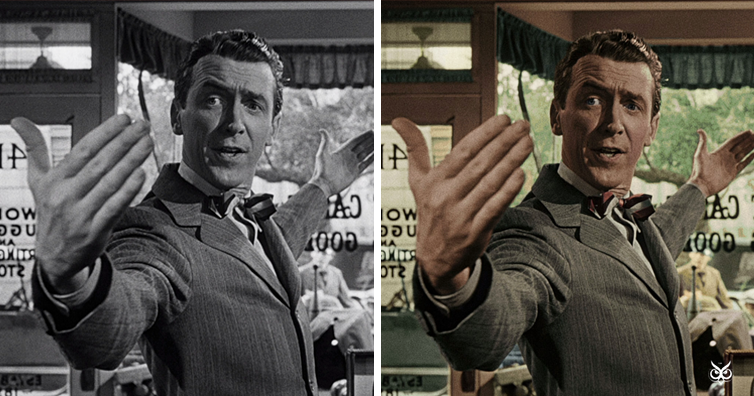A while ago we talked about How It’s Possible For Old Films To Be Remastered In High Definition. When we posted the link on our Facebook page, people in the comment section asked an indeed, very interesting question: “How do they add color to old black-and-while movies?”
Well, because a I’m A Useless Info Junkie reader should now the answer to this question (how else can you become the most interesting person you know?), here it is.
Even though film colorization was around since the 1970s (it was invented by NASA engineer Wilson Markle who founded Colorization, Inc.), the process became popular in the 1980s when businessman Ted Turner bought up the entire MGM Library. Turner began to aggressively colorize films because he figured that there was no market for them as B&W movies. Unfortunately, there is some truth to this: surveys have shown that 50% of your audience will tune out immediately upon seeing a black and white image. So colorizing these old movies, seem like a way to bring these films into the future. But how do they do it? (the article continues after the ad)
Apparently, despite being extremely tedious, the logic behind the whole colorization process is quite simple. A digital version of the film is scanned into a computer where a software analyzes the movie frame by frame. Artists then go through the frames one at a time and outline each color area and add a specific color for each area. Because black and white films hold the information of the shades/brightness, the computer automatically handles the brightness gradients. Then, the whole process is speeded up by using interpolation techniques. Due to the fact that between frames these is usually very little variation, the artist will commonly color every 10th-15th frame and let the computer handle the frames in between. After hours and hours of work, the classic B&W film will be entirely in color!
But how do they choose the colors?
There are usually three ways of determining which colors to use. The first one is to assign colors based on common sense (e.g. the grass is green and the sky is blue). The second one is by looking at old pictures from the set that happen to be in color (e.g. even though the film is B&W, colored pictures of James Stewart from It’s a Wonderful Life (1946) show him with light green suit). The third one is pure guess. When no information can be found on the actual colors, artists would simply have to guess based on the costumes that were commonly used at the time the film was produced.
If you like what you read, then you will definitely love this one: How Is It Possible For Old Films To Be Remastered In High Definition?
Photo: RKO Radio Pictures
Photoshop: I’m A Useless Info Junkie
Sources: Frame by Frame: Colorizing Classic B&W Movies | How do they color old black-and-white movies?



